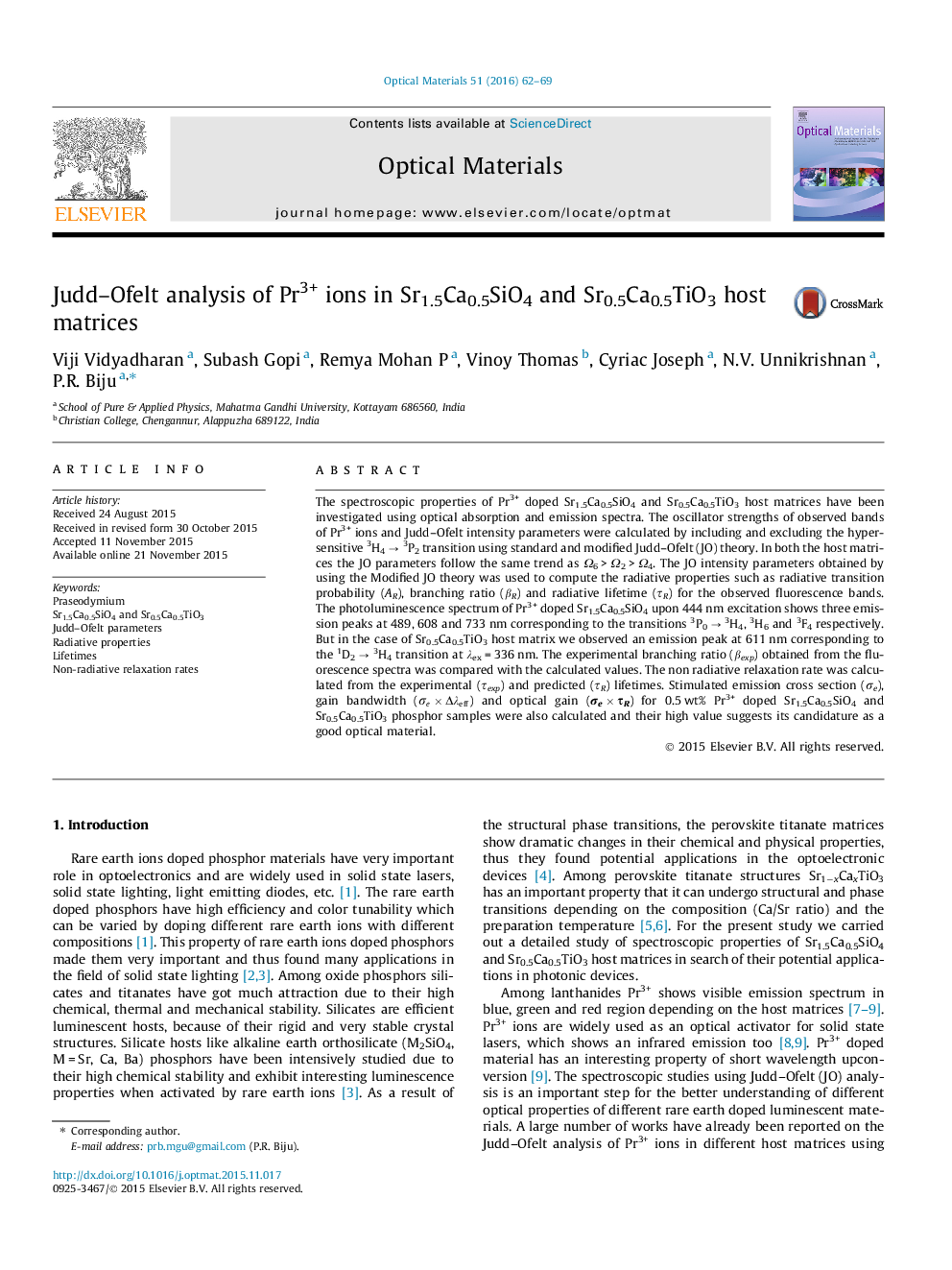| کد مقاله | کد نشریه | سال انتشار | مقاله انگلیسی | نسخه تمام متن |
|---|---|---|---|---|
| 1493525 | 1510783 | 2016 | 8 صفحه PDF | دانلود رایگان |

• Spectroscopic properties of Pr3+ doped Sr1.5Ca0.5SiO4 and Sr0.5Ca0.5TiO3 host matrices have been investigated.
• Judd–Ofelt intensity parameters were calculated using standard and modified Judd–Ofelt (JO) theory.
• Radiative properties such as radiative transition probability (AR), branching ratio (βR) and radiative lifetime (τR) were also calculated.
• High value of σe , σe×Δλeffσe×Δλeff and σe × τR for prepared phosphor samples suggests its candidature as a good optical material.
The spectroscopic properties of Pr3+ doped Sr1.5Ca0.5SiO4 and Sr0.5Ca0.5TiO3 host matrices have been investigated using optical absorption and emission spectra. The oscillator strengths of observed bands of Pr3+ ions and Judd–Ofelt intensity parameters were calculated by including and excluding the hypersensitive 3H4 → 3P2 transition using standard and modified Judd–Ofelt (JO) theory. In both the host matrices the JO parameters follow the same trend as Ω6 > Ω2 > Ω4. The JO intensity parameters obtained by using the Modified JO theory was used to compute the radiative properties such as radiative transition probability (AR), branching ratio (βR) and radiative lifetime (τR) for the observed fluorescence bands. The photoluminescence spectrum of Pr3+ doped Sr1.5Ca0.5SiO4 upon 444 nm excitation shows three emission peaks at 489, 608 and 733 nm corresponding to the transitions 3P0 → 3H4, 3H6 and 3F4 respectively. But in the case of Sr0.5Ca0.5TiO3 host matrix we observed an emission peak at 611 nm corresponding to the 1D2 → 3H4 transition at λex = 336 nm. The experimental branching ratio (βexp) obtained from the fluorescence spectra was compared with the calculated values. The non radiative relaxation rate was calculated from the experimental (τexp) and predicted (τR) lifetimes. Stimulated emission cross section (σe ), gain bandwidth (σe×Δλeffσe×Δλeff) and optical gain (σe × τR) for 0.5 wt% Pr3+ doped Sr1.5Ca0.5SiO4 and Sr0.5Ca0.5TiO3 phosphor samples were also calculated and their high value suggests its candidature as a good optical material.
Figure optionsDownload high-quality image (92 K)Download as PowerPoint slide
Journal: Optical Materials - Volume 51, January 2016, Pages 62–69